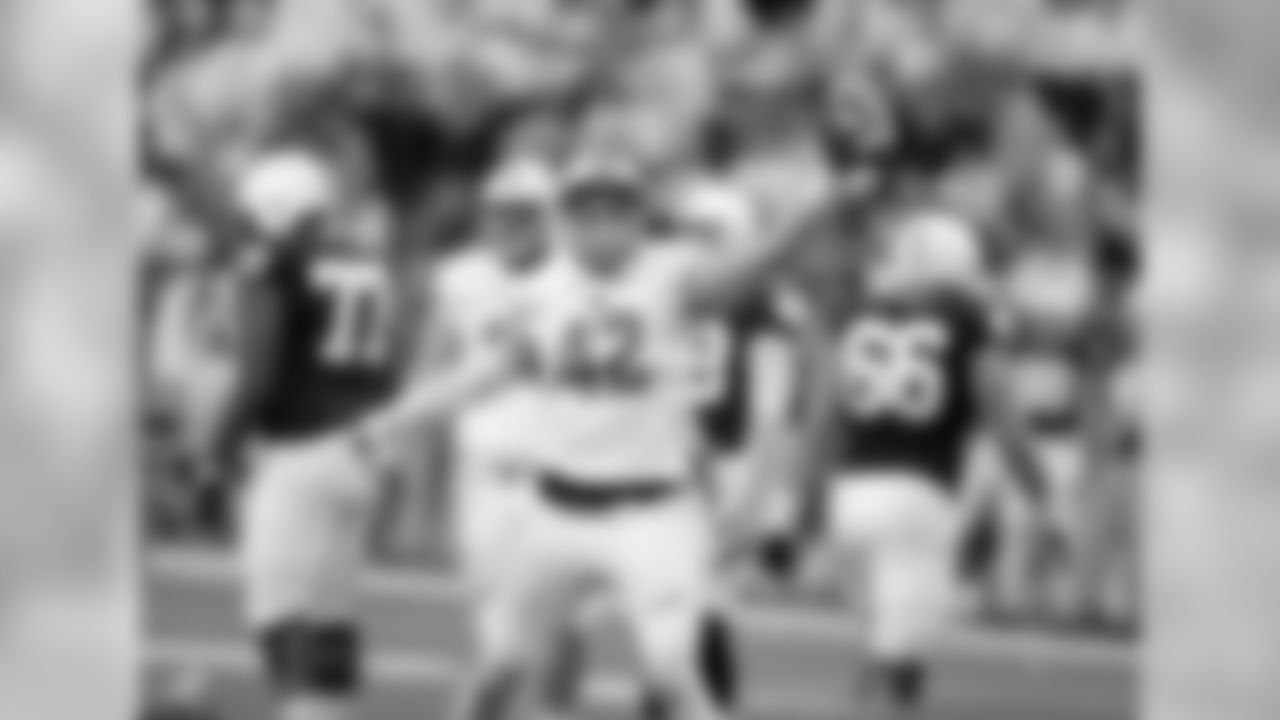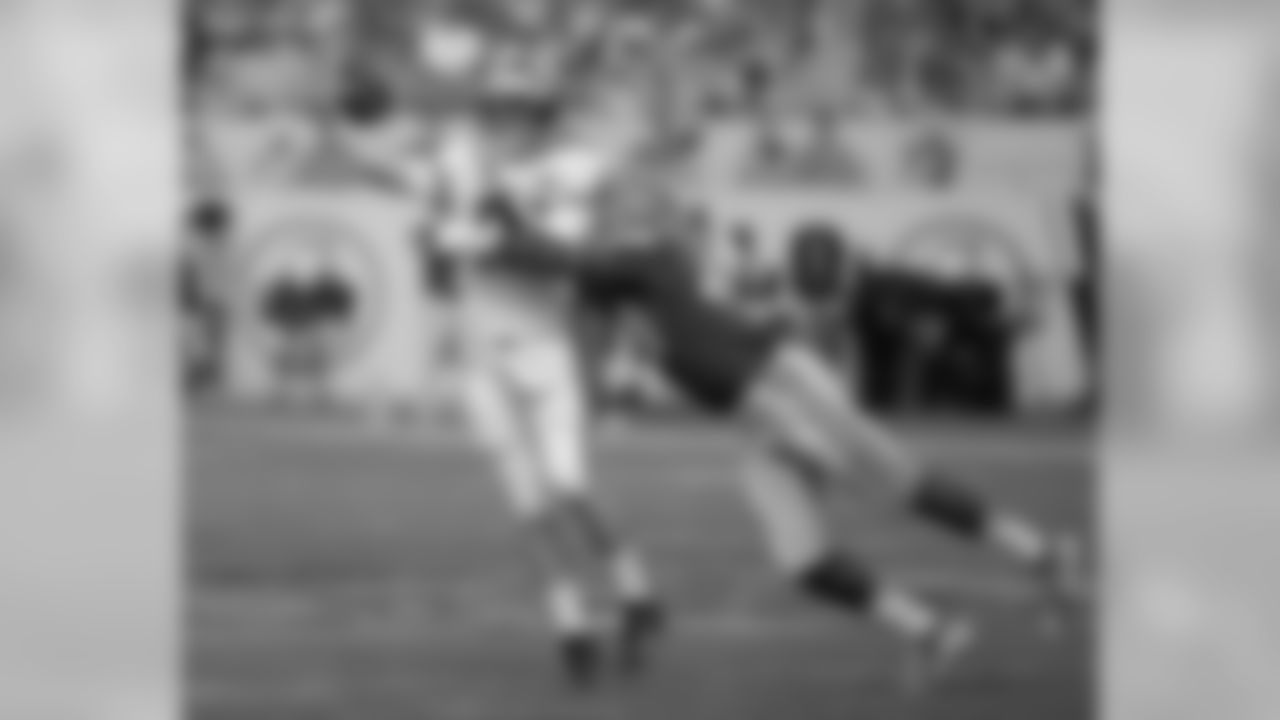Three Giants writers debate the most important aspects of the NFL Scouting Combine:
NFL.com names the top 50 prospects in the 2017 NFL Draft.

- Adam Shaheen - TE, Ashland

- Jordan Willis - DE, Kansas State

- Teez Tabor - CB, Florida

- Marcus Williams - S, Utah

- Zay Jones - WR, East Carolina

- Obi Melifonwu - S, Connecticut

- Marlon Humphrey - CB, Alabama

- Kevin King - CB, Washington

- Tim Williams - LB, Alabama

- Josh Jones - S, N.C. State

- Curtis Samuel - RB, Ohio State

- Chidobe Awuzie - CB, Colorado

- Evan Engram - TE, Ole Miss

- Tyus Bowser - LB, Houston

- T.J. Watt - LB, Wisconsin

- Cam Robinson - OT, Alabama

- DeShone Kizer - QB, Notre Dame

- Adoree' Jackson - CB, USC

- Mitchell Trubisky - QB, North Carolina

- Jabrill Peppers - S, Michigan

- Budda Baker - S, Washington

- Quincy Wilson - CB, Florida

- Deshaun Watson - QB, Clemson

- Ryan Ramczyk - OT, Wisconsin

- Alvin Kamara - RB, Tennessee

- Garett Bolles - OT, Utah

- Taco Charlton - DE, Michigan

- John Ross - WR, Washington

- Takkarist McKinley - DE, UCLA

- Jarrad Davis - LB, Florida

- Charles Harris - DE, Missouri

- Haason Reddick - LB, Temple

- Tre'Davious White - CB, LSU

- Gareon Conley - CB, Ohio State

- Forrest Lamp - G, Western Kentucky

- Dalvin Cook - RB, Florida State

- Christian McCaffrey - RB, Stanford

- Derek Barnett - DE, Tennessee

- David Njoku - TE, Miami

- Mike Williams - WR, Clemson

- Corey Davis - WR, Western Michigan

- Reuben Foster - LB, Alabama

- O.J. Howard - TE, Alabama

- Marshon Lattimore - CB, Ohio State

- Jonathan Allen - DT, Alabama

- Solomon Thomas - DE, Stanford

- Leonard Fournette - RB, LSU

- Malik Hooker - S, Ohio State

- Jamal Adams - S, LSU

- Myles Garrett - DE, Texas A&M
At this time next week, the football community will gather in Indianapolis for the annual NFL Scouting Combine. From the 40-yard dash to prospect interviews to press conferences with head coaches and general managers, it is one of the biggest events on the league calendar leading up to the new season.
|
|||||||||||||||||||
In this week's "Cover 3" on Giants.com, we asked our staffers what they'll be looking for at Lucas Oil Stadium.
Here's what they had to say:
LESSER-KNOWN PLAYERS CAN SHINEBy John Schmeelk
The combine is an interesting event that can help teams fill in some blanks when it comes to NFL prospects. Depending on the position you play, you look for different things. Measurements and health are important for all players. Very often colleges will not have correct height/weight data and the combine can give teams a guarantee exactly the size of the athlete they are getting. A 6-foot-3 quarterback, for example, is looked at a lot differently than 6-foot-1. Arm length is important for offensive linemen, etc.
The second important thing you look for is health. NFL teams get their first up-close look at these guys and exactly how healthy they are after playing for 2-4 years in college. Many players have serious injury concerns and those can be alleviated or elevated based on these examinations. In terms of the physical events themselves, I always look for any outliers. I'm not going to be concerned if one guy runs a 4.45 and another a 4.51 in the 40-yard dash but you do start raising eyebrows at receivers and cornerbacks who run in the 4.6 and 4.7 ranges. Those types of times make you start to think whether or not those individual players can hang with the athletes at the NFL level.
For positions that require a lot of change of direction, the shuttle drills are important, while the jumping drills can often point to a player's explosive ability. Raw athletic numbers, of course, don't always transfer to the playing field. You look at these results as a way to verify what you already know about a player from his performance in college. They can either certify what you already think, or make you rethink something about a player and take a second look at what they did in college.
I think the combine is far more important for players from smaller schools than larger ones. Prospects from small conferences face a bigger jump in competition coming to the pros, and putting up good performances in these events might make talent evaluators more confident they can handle competition at the pro level. A player from the FCS level with a ton of production will be looked at differently if he puts up times at the combine in line with players from larger FBS programs.
What I like most about the combine is seeing the players speak and interact with people up close and in person. You get a feel for their personalities and how they might fit into a NFL locker room. You learn things about guys by watching them operate in such a pressure packed atmosphere, whether on the field or behind a podium.
MEDICAL EVALUATIONS ARE CRITICAL
By Dan Salomone
The 40-yard dash gets people to tune into NFL Network, but the real race takes place in the bowels of Lucas Oil Stadium. That's where medical staffs from all 32 clubs conduct thorough evaluations of more than 300 prospects. And they need to do it in a week. First held in 1982 in Tampa, Fla., the combine's original purpose was for teams to ascertain medical histories of the top draft-eligible players coming out of college. As the NFL grew, so did the combine, but the most important part has not changed.
"I think when you look at the history of the combine, probably still the most important thing is you have the chance to get these players in front of the doctors," Giants coach Ben McAdoo said last year. "And get them examined there so you know what you're dealing with and get a medical grade on them."
Added McAdoo: "They're not just a guy on tape, they're not just a guy on a piece of paper, but they're a human being."
PROSPECTS MUST BE WELL-ROUNDED
By Lance Medow
The combine is simply a complementary piece to a player's resume during the regular season. A few days of workouts shouldn't trump a much bigger sample size of work from games, especially since players don't wear any pads during the combine. With that being said, I look for players who showcase versatility in the workouts. It's not about just wowing everyone in the marquee event (40-yard dash) but also whether they're successful during various drills. You want to find well-rounded players, not an individual who just flashes in one area. It's also important to see that their production during drills, without pads or helmets, complements or even surpasses what they accomplish on the field. For example, if a player showcases great speed in games, you should see that reflected in the 40-yard dash or if a player appears to have impressive ups then that should also show up in the vertical jump.
To me, the most important facet of the combine is what you actually don't see on television. That's what takes place in the face-to-face meetings with team executives. More often than not, you learn a lot about a player off the field more so than what happens between the lines. The mental side of football is just as key as the physical aspects. How a player reacts to schemes and understands the X's and O's of football is the biggest takeaway from the combine, not necessarily the stats he posts during a few workouts.
NFL.com's Mike Mayock ranked the top player at each position in the 2017 NFL Draft.

Quarterback: DeShone Kizer, Notre Dame

Running Back: Dalvin Cook, Florida State

Tight End: O.J. Howard, Alabama

Wide Receiver: Corey Davis, Western Michigan

Offensive Tackle: Ryan Ramczyk, Wisconsin

Interior OL: Forrest Lamp, Western Kentucky

Interior DL: Jonathan Allen, Alabama

Edge Rusher: Myles Garrett, Texas A&M

Linebacker: Reuben Foster, Alabama

Cornerback: Sidney Jones, Washington

Safety: Malik Hooker, Ohio State
















